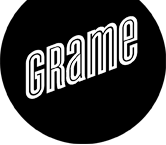Mots clés
audio communication compiler composition dataflow Domain Specific Language DSP ecosystem Elody FAUST functional graphic inscore interaction language lock-free MIDI MidiShare music music score musicale musique operating processing programming real-time score signal synchronization systems
2014 |
|
Antoniadis, Pavlos; Bevilacqua, Frédéric; Fober, Dominique Proceedings of the 9th Conference on Interdisciplinary Musicology — CIM14. Berlin, Germany, 2014. (Abstract | Links | BibTeX | Étiquettes: gesture, inscore, music pedagogy, score) @inproceedings{antoniadis:cim14,
title = {Gesture cutting through textual complexity: Towards a tool for online gestural analysis and control of complex piano notation processing}, author = {Pavlos Antoniadis and Frédéric Bevilacqua and Dominique Fober}, url = {CIM14-final.pdf}, year = {2014}, date = {2014-12-04}, booktitle = {Proceedings of the 9th Conference on Interdisciplinary Musicology — CIM14. Berlin, Germany}, abstract = {This project introduces a recently developed prototype for real-time processing and control of complex piano notation through the pianist’s gesture. The tool materializes an embodied cognition-influenced paradigm of interaction of pianists with complex notation (embodied or corporeal navigation), drawing from latest developments in the computer music fields of musical representation (augmented and interactive musical scores via INScore) and of multimodal interaction (Gesture Follower). Gestural, video, audio and MIDI data are appropriately mapped on the musical score, turning it into a personalized, dynamic, multimodal tablature. This tablature may be used for efficient learning, performance and archiving, with potential applications in pedagogy, composition, improvisation and score following. The underlying metaphor for such a tool is that instrumentalists touch or cut through notational complexity using performative gestures, as much as they touch their own keyboards. Their action on the instrument forms integral part of their understanding, which can be represented as a gestural processing of the notation. Next to the already mentioned applications, new perspectives in piano performance of post-1945 complex notation and in musicology (‘performative turn’), as well as the emerging field of ‘embodied and extended cognition’, are indispensable for this project. }, keywords = {gesture, inscore, music pedagogy, score}, pubstate = {published}, tppubtype = {inproceedings} } This project introduces a recently developed prototype for real-time processing and control of complex piano notation through the pianist’s gesture. The tool materializes an embodied cognition-influenced paradigm of interaction of pianists with complex notation (embodied or corporeal navigation), drawing from latest developments in the computer music fields of musical representation (augmented and interactive musical scores via INScore) and of multimodal interaction (Gesture Follower). Gestural, video, audio and MIDI data are appropriately mapped on the musical score, turning it into a personalized, dynamic, multimodal tablature. This tablature may be used for efficient learning, performance and archiving, with potential applications in pedagogy, composition, improvisation and score following. The underlying metaphor for such a tool is that instrumentalists touch or cut through notational complexity using performative gestures, as much as they touch their own keyboards. Their action on the instrument forms integral part of their understanding, which can be represented as a gestural processing of the notation. Next to the already mentioned applications, new perspectives in piano performance of post-1945 complex notation and in musicology (‘performative turn’), as well as the emerging field of ‘embodied and extended cognition’, are indispensable for this project.
|
2012 |
|
Fober, Dominique; Bevilacqua, Frederic; Assous, Roland Segments and Mapping for Scores and Signal Representations (Technical Report) GRAME 2012. (Abstract | Links | BibTeX | Étiquettes: gesture, music, music score, synchronization) @techreport{fober12tr,
title = {Segments and Mapping for Scores and Signal Representations}, author = {Dominique Fober and Frederic Bevilacqua and Roland Assous}, url = {TR-segmentation.pdf}, year = {2012}, date = {2012-01-01}, institution = {GRAME}, abstract = {We present a general theoretical framework to de- scribe segments and the different possible mapping that can be established between them. Each segment can be related to different music representations, graphical scores, music signals or gesture signals. This theoretical formalism is general and is compatible with large number of problems found in sound and gesture computing. We describe some examples we developed in interactive score representation, superposed with signal representation, and the description of synchronization between gesture and sound signals.}, keywords = {gesture, music, music score, synchronization}, pubstate = {published}, tppubtype = {techreport} } We present a general theoretical framework to de- scribe segments and the different possible mapping that can be established between them. Each segment can be related to different music representations, graphical scores, music signals or gesture signals. This theoretical formalism is general and is compatible with large number of problems found in sound and gesture computing. We describe some examples we developed in interactive score representation, superposed with signal representation, and the description of synchronization between gesture and sound signals.
|

